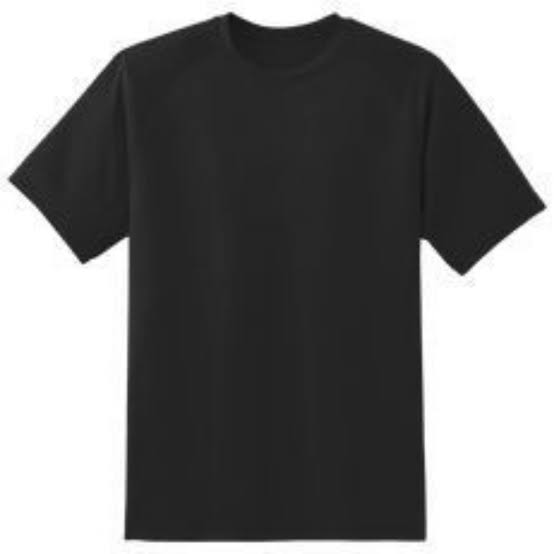Pada waktu revolusi T-shirt atau Kaos, saat itu diproduksi secara masal oleh industri. Para penggiat bisnis atau pengusaha konvekai menyadari bahwa T-shirt atau kaos dapat menjadi media promosi yang amat efektif serta efesien. Segala persyaratan sebagai media promosi yang baik ada di T-shirt atau kaos. Murah, mobile, fungsional, dapat dijadikan souvenir, dan sebagainya. Sekarang ini kaos juga digunakan untuk mengkomunikasikan ciri bagian dari identitas seseorang. Di saat yang bersamaan, kelompok-kelompok tertentu, misalnya komunitas club motor, sekolahan, atau organisasi – organisasi, juga menyadari bahwa T-shirt atau kaos dapat menjadi media propaganda yang sempurna selain media yang telah ada. Tulisan bahkan gambar apapun dapat dicetak diatasnya, tahan lama, dan penyebarannya mampu melewati batas-batas yang tidak dapat dicapai oleh
media lain, seperti misalnya poster dll.

Dengan semakin tumbuhnya industri periklanan, kaos merupakan bilboards mini yang cukup efektif untuk mengkomunikasikan sebuah produk, sebagaimana mengkomunikasikan diri atau identitas. Seringkali kaos dijadikan iklan berjalan yang oleh pengiklan kadang-kadang dibagikan secara gratis. Di Indonesia, adalah hal yang biasa banyak orang berebut mendapatkan pembagian kaos dari OPP pada saat Pemilu. Karena bisa dijadikan ajang promosi asa capres, caleg dan sebagainya. Perusahaan-perusahaan sekarang ini juga membuat kaos dengan nama atau logo perusahaan yang tertera di atasnya contohnya (Coca Cola, Reebok, Nike, Wilson, Adidas, Puma dll), dan menjualnya di toko-toko sebagai pakaian produksi massal yang siap pakai. Bagi sejumlah besar pemakainya, tentu
memakai kaos oblong tidak dimaksudkan sebagai iklan, melainkan sebagai indikasi status dan pendapatan pemakainya, loyalitas atau kepercayaan pada satu produk.

Kaos atau T-shirt buatan perusahaan tertentu dianggap mewakili gaya hidup atau selera yang khas, sekaligus si pemakai mengiklankan perusahaan pembuatnya. Misalnya kaos bermerek Benetton, Ralph Lauren atau Calvin Klein. Simbol-simbol tertentu pada kaos, seperti buaya kecil atau kuda poni dan pemain polo kecil, juga sangat penting. Simbol-simbol ini bukan hanya menunjukkan status pemakainya yang mampu mengkonsumsi pakaian buatan desainer mahal, tetapi juga status dalam sistem fashion itu sendiri.

Sehubungan dengan pola penempatan ruang, sebagai pakaian dalam kaos adalah pakaian privat. Tetapi kemudian dengan negosiasi lewat media massa dan penemuan bahan serta model-model baru, kaos perlahan mulai tampil sebagai pakaian publik. Karena itu, sejalan dengan kecenderungan kehidupan modern, perjalanan kaos dari ruang privat ke ruang publik ini merupakan ekspansi ruang privat atas ruang publik (privatisasi ruang publik). Sementara dalam kaitannya dengan pola pemanfaatan waktu, kaos menunjukkan bagaimana waktu senggang semakin berhasil mengekspansi waktu yang lain dalam kehidupan sehari-hari.
____________________________
T-Shirt Use
At the time of the T-shirt or T-shirt revolution, when it was mass produced by the industry. Convenience business activists or entrepreneurs realize that T-shirts or T-shirts can be a very effective and efficient promotional medium. All the requirements as a good promotional media are on T-shirts or t-shirts. Cheap, mobile, functional, can be used as souvenirs, and so on. Nowadays t-shirts are also used to communicate the characteristics of a part of a person’s identity. At the same time, certain groups, for example the motorcycle club community, schools, or organizations, also realize that T-shirts can be perfect propaganda media apart from existing media. Any writing or image can be printed on it, it is durable, and its spread is capable of crossing boundaries that cannot be reached by humans other media, such as posters etc.
With the growth of the advertising industry, t-shirts are mini billboards which are quite effective for communicating a product, as well as communicating oneself or identity. T-shirts are often used as walking advertisements which advertisers sometimes distribute free of charge. In Indonesia, it is common for many people to fight over the distribution of T-shirts from the OPP during elections. Because it can be used as a promotional event for presidential candidates, legislative candidates and so on. Companies these days also make T-shirts with the company’s name or logo printed on them for example (Coca Cola, Reebok, Nike, Wilson, Adidas, Puma etc.), and sell them in stores as ready-to-wear mass-produced clothing. For a large number of users, sure wearing T-shirts is not intended as advertising, but rather as an indication of the status and income of the wearer, loyalty or trust in one product.
T-shirts or T-shirts made by certain companies are considered to represent a distinctive lifestyle or taste, as well as the wearer’s advertising the company that makes them. For example T-shirts branded Benetton, Ralph Lauren or Calvin Klein. Certain symbols on the t-shirt, such as the little crocodile or the little pony and polo player, are also very important. These symbols not only show the status of the wearer who can afford to consume expensive designer clothes, but also the status of the fashion system itself.
In relation to the pattern of spatial placement, as clothing in a t-shirt is private clothing. But then with negotiations through the mass media and the discovery of new materials and models, T-shirts slowly began to emerge as public clothing. Therefore, in line with the trend of modern life, this t-shirt journey from private space to public space is an expansion of private space over public space (privatization of public space). Meanwhile, in relation to the pattern of time utilization, T-shirt shows how leisure time is increasingly successful in expanding other times in everyday life.
